ddddMinimal jeune fille



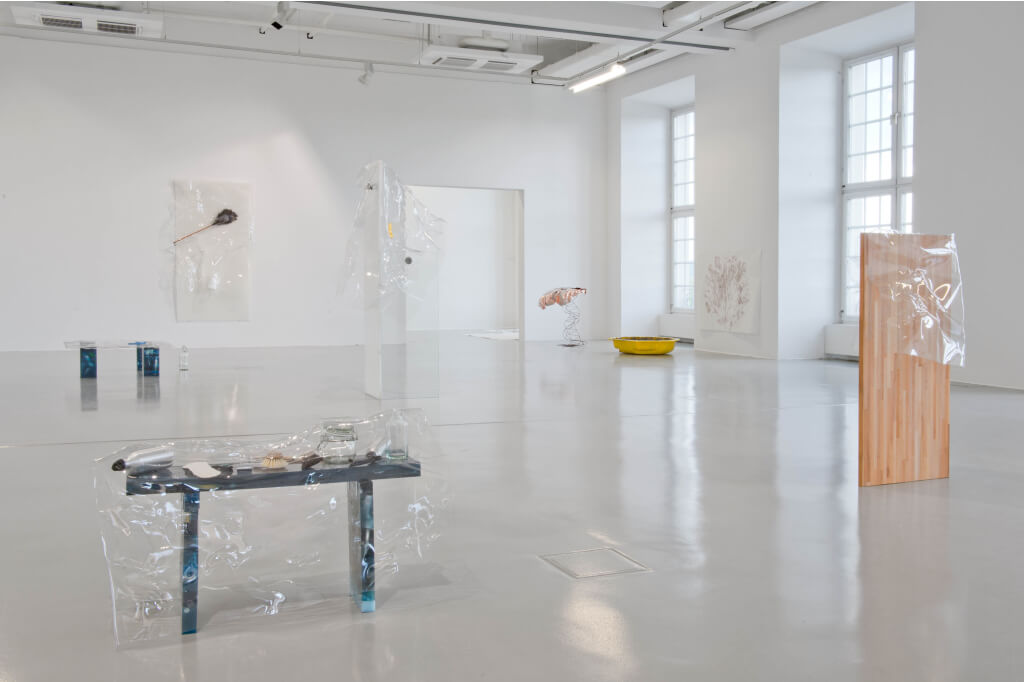
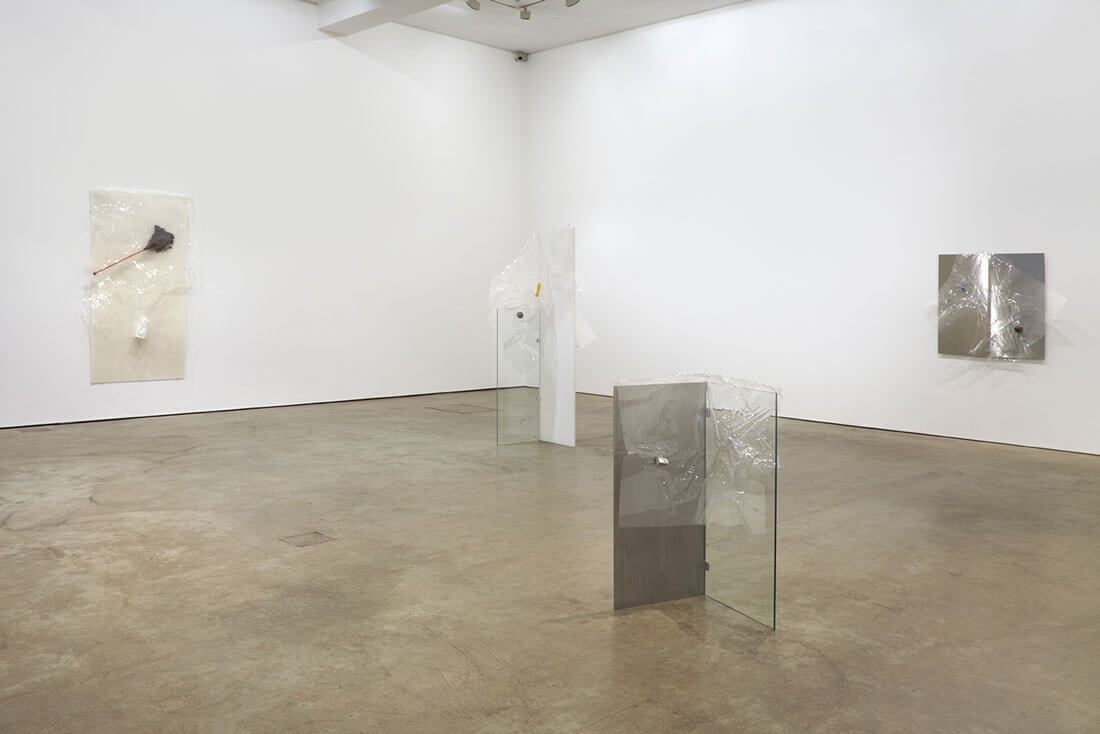


Minimal Jeune Fille
“I want people to be beautiful”
The Young-Girl is the spitting image of the total and sovereign consumer; and that’s how she behaves in all realms of existence.
The Young-Girl knows the value of things ever so well. Often, before decomposing too visibly, the Young-Girl gets married.
The Young-Girl is good for nothing but consuming; leisure or work, it makes no difference. Because of its having been put on a level of equivalence with all intimacy in general, the Young-Girl’s intimacy has become something anonymous, exterior, and object like.
The Young-Girl never creates anything; she recreates herself. 1
The film Safe (1995) directed by Todd Haynes gave us Julianne Moore playing the role of housewife Carol White; a painfully brilliant Moore spirals out of control, physically and mentally, as her character is diagnosed with “multiple chemical sensitivity” – visibly falling apart, as her body reacts in an extreme way to the toxins and products experienced and used in everyday life of the 1980s. As her condition increasingly worsens, she moves into a new age retreat, in the hope of finding safety from the chemical and industrial world and relief from her symptoms and the anxiety these cause. This ‘allergy’ is not only the physical manifestation of this woman’s psychological reaction to the packaged, wipe-clean, consumable world of the late twentieth century, but also an analogy for her emotional (non)existence and inherent paranoia in her relationship to the outside world.
Artist Juliette Bonneviot created the character Jeune Fille Minimale, as a protagonist to inspire a new body of sculpture and video, exploring what writer Timothy Morton describes as a “dark ecology”, akin to a noir film, in his book The Ecological Thought. Yet unlike Moore’s character, Bonneviot’s Jeune Fille is not afraid of what the world will do to her, but instead, develops a neurosis about what her conspicuous consumption and lifestyle will do to the world. However, the anxiety of how we live and consume today is palpable in both characters experiences and their main relationship is not with another person, but with the stuff in the world around them. Bonneviot also likens her character to the figure of The Young-Girl, in the French philosophical collective Tiqqun’s Preliminary Materials for a Theory of the Young- Girl, as she is the perfect Young-Girl, a networked body, consuming the consumable, shaping herself and her life, thus becoming the ultimate consumable herself.
Bonneviot’s antagonist is waste, in particular plastic waste. Plastic is a material that is associated with wipe-clean sanitation and also a protective barrier for foods and other goods, to ensure their ‘purity’ for the consumer, regardless of how dirty or covered in insecticides or factory residue they actually are. Plastic is safe (incidentally, Moore’s character zips herself up to hide from the world in a plastic tent in Safe) and can keep things clean and fresh. Bonneviot’s Jeune Fille is presented alongside the objects she uses, in sculptural forms, depicted in videos washing, wiping, shaving, and perfecting the presentation of her own objecthood. Alongside these, the objects are displayed as if museum pieces, or relics, from life today (chosen because they are not disposable) – laid out as if an anthropological display, for us to interpret their use and role, and covered by sheets of plastic to either keep the objects sanitary, or the audience safe from the unsanitary used items. This heightens their uncanny and abject nature. Alongside these are the PET Woman sculptures; torsos of female bodies molded from the same wrinkly plastic sheeting, as if protective layers for Renaissance casts, with transcribed texts from forums on the internet discussing waste.
The places where things are made from plastic are often the most unsanitary places that we inhabit. Toilets, sanitary product disposal bins, showers, wrapped and cling filmed meats, fish and vegetables… they also often involve the body – either to consume, or to clean, or to protect. Plastic, a substance far from our mortal flesh in its composition, that will not often degrade biologically, is the thing that we choose to keep us safe. Like the Young-Girl, this is also a symptom and product of late-Capitalism. Akin to the way the Young-Girl’s body and beauty is produced by consuming; products clean, buff, shape, remove hair, skin and nails, altering and disinfecting it from its messy human excesses. Fluid, discharge, blood, saliva, spit, shit, urine and semen are all products to be collected, wiped clean and eliminated by our plastic friends.
Artist Mierle Laderman Ukeles made the work Touch Sanitation between 1977 and 1980 in a New York sanitation centre. Ukeles stated: ‘“I’m not here to watch you, to study you, to analyze you, to judge you. I’m here to be with you: all the shifts, all the seasons, to walk out the whole City with you.” I face each worker, shake hands, and say: “Thank you for keeping NYC alive.”’ This performance took place every day and involved 8,500 sanitation workers – Ukeles has explained she was not there to “help” the workers but to be part of the daily routine, to be a part of their network, in order to keep them “alive”. Ukeles wrote the text Manifesto for Maintenance Art in 1969, just after the birth of her first child, in order to create a position for herself in which she could be a mother and artist, making work within the structure and action of everyday life, stating: “I do a hell of a lot of washing, cleaning, cooking, renewing, supporting, preserving, etc.,” it reads. “Also, up to now separately I ‘do’ Art. Now, I will simply do these maintenance everyday things, and flush them up to consciousness, exhibit them, as Art.” Bonneviot has expressed an interest in Ukeles and her approach and stance to work and life. However, in contrast to Ukeles more Utopian outlook (in that it does not necessarily seem critical of the system, or an attempt to undermine it, rather to state that art cannot be totally dissociated from life, and that one must inform the other) Bonneviot’s seems more sharply critical of the way we live now. It also could be described as a kind of end-point to what Alan Kaprow described as the “merging of art and life”; where the reality of life is mirrored and performed, where humans are subject to infinite simulacrum, consuming in order to perform and transform their own object-hood. In turn enabling them to then be consumed by others, in an endless Mobius strip of spectacle.
Kathy Noble
1 Preliminary Materials for a Theory of the Young-Girl, Tiqqun, 1999
ddddShanghai Gesture
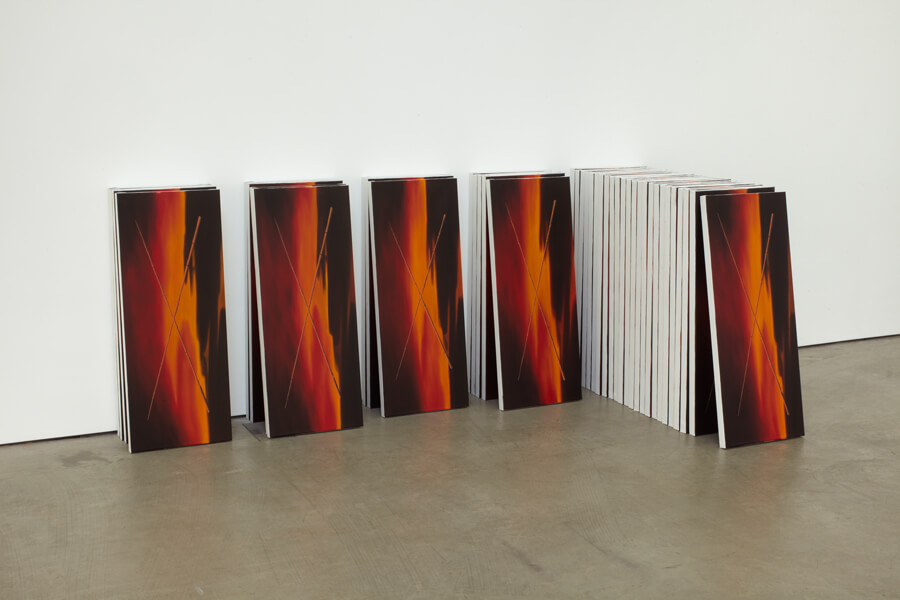

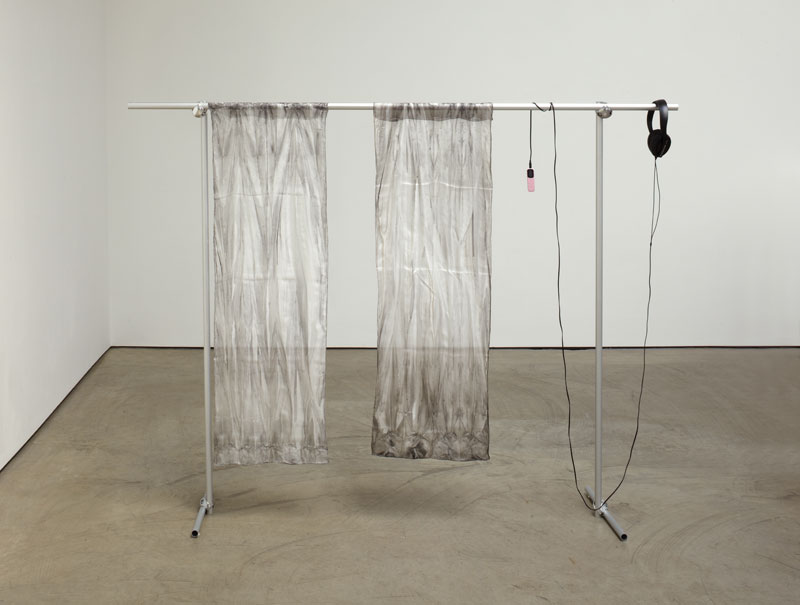
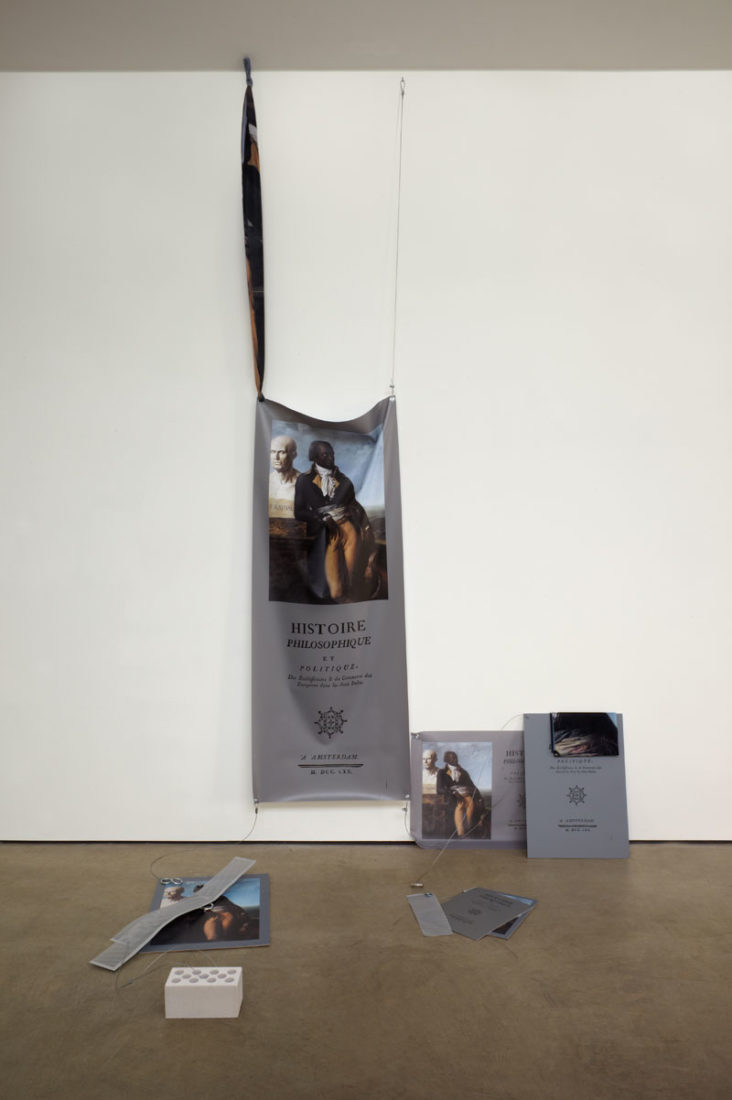

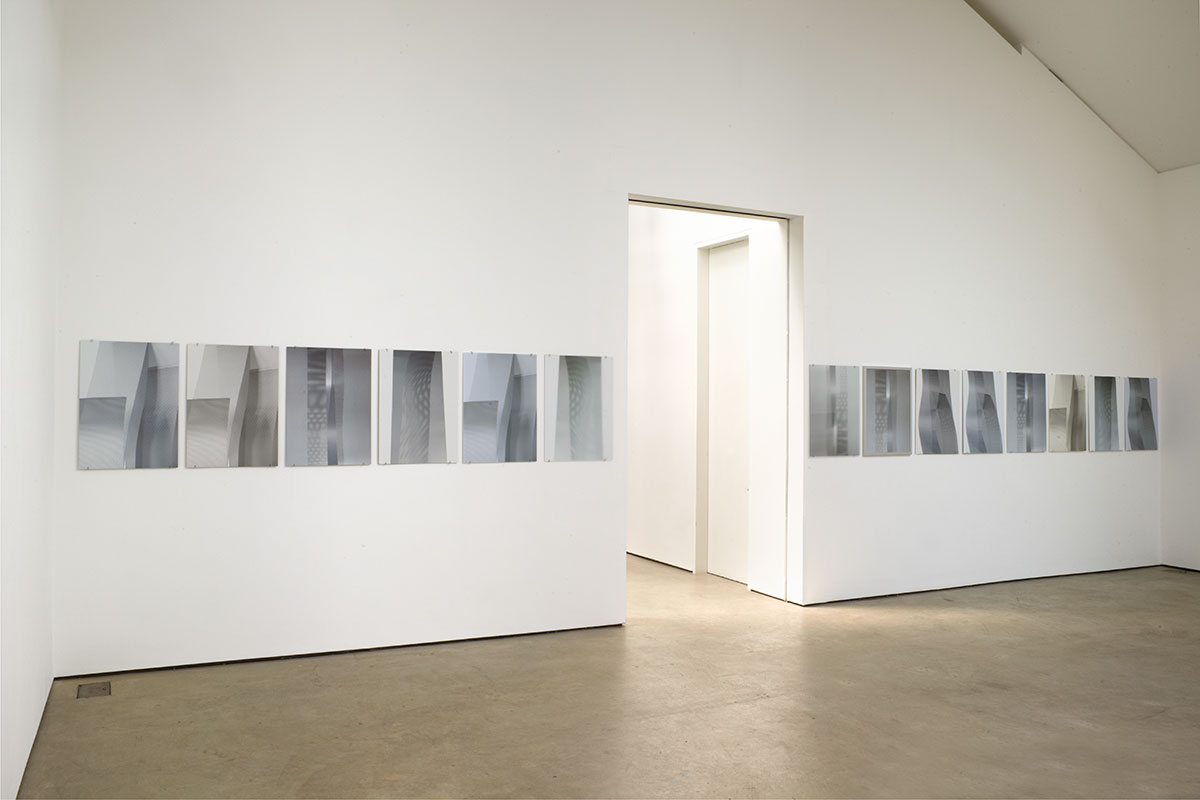
Shanghai Gesture 2 @ Wilkinson Gallery
In The Record of the Classification of Old Painters, sixth century Chinese art historian Xie He established the ‘six principles of painting,’ classing artists into six categories. The first was ‘Spiritual Resonance,’ while the final was ‘Transmission by Copying.’ These two poles, and what lay between, hence emerged as a critical factor in both the creation and appreciation of Chinese painting.
‘Transmission by Copying’ refers simultaneously to the circulation of the original as well as a comprehension of the fundamental method of Chinese painting and calligraphy. Xie believed that there was no creativity involved in this category; thus, he demoted it to the sixth and final ranking. However, for those new to the art of painting and calligraphy, it represents the inception of a long journey towards the peak of the pyramid.
Juliette Bonneviot’s ‘gesture’ can be seen as an instance of ‘Transmission by Copying,’ even though she has never taken the ten-plus-hour-long flight to the other side of the world, nor has she heard of Xie He. Her ‘original’ is the Chinese version of the poster of a Hollywood film. The scroll wiggles down from what resembles a ‘typically Oriental’ aluminum arch with clumsy characters, which, strangely enough, are written in the ancient Chinese style of seal script. The red circles and crosses, denoting right and wrong, are copied from Gu Wenda’s Mythos of Lost Dynasties, a pseudo-character series that pointedly expresses appreciation and disapproval. Bonneviot’s writing thus echoes a style of calligraphy that is more than two thousand years old, filtered through the revised ‘copy’ of a contemporary Chinese artist-calligrapher very much steeped in his culture’s aesthetic tradition. And, while Bonneviot is not endeavoring to attain the ‘Spiritual Resonance’ that Xie claimed as the goal for all painting, she instead achieves an intriguing scrutiny of a series of simplified symbols. This unites Bonneviot with the massive degree of ‘Transmission by Copying’ currently taking place in China. The copycatting gadgets imitate not only the appearance but also the brand name of major Western products, revealing the Chinese public’s image of the contemporary lifestyle of luxury – one of the more extreme examples of Bourdieu’s ‘symbolic capital.’ This unprecedented process is also scrutinized by Bonneviot in her ‘gesture,’ wherein mass production is captured through ironic symbols: the sweet ‘candy bar’-shaped music player hanging helplessly alongside the silk and ink. The brand of the player, iRiver, easily recalls the fame of iPod. But, upon further scrutiny, it turns out to be a South Korean product. And so what? It is as far as forever, seven time zones away, and China and Korea are so close to each other. From here, even I can barely see any difference.
Nevertheless, the soundtrack in those players brings another kind of ‘Spirit’ to the ‘Copying.’ The sound of Chinese instruments and electronic drums showcase a blend of acid rock fused with the exotic. This soundtrack also draws the outline of a comfort zone. It’s mute and undisturbed inside, protected by the boundary of distance and language, and noisy and chaotic outside, stuffed with a nod towards the African continent as well as absurd poetic monologues.
I have a snow globe in my hands, and there’s a tiny little double-roof pavilion inside, as well as a little oriental man in a white garment, standing on one leg, arms held up and balanced on his sides. It is not snow that covers the tiny little ground, but yellow leaves. I shake the globe. From its base, the sound of a bamboo flute being played, while the leaves waving up and falling gradually around the little man reveal and then re-cover the black character written on the red background. I am guessing it reads ‘lucky.’ I stare at the globe. It is China. Almost.
Li Qi
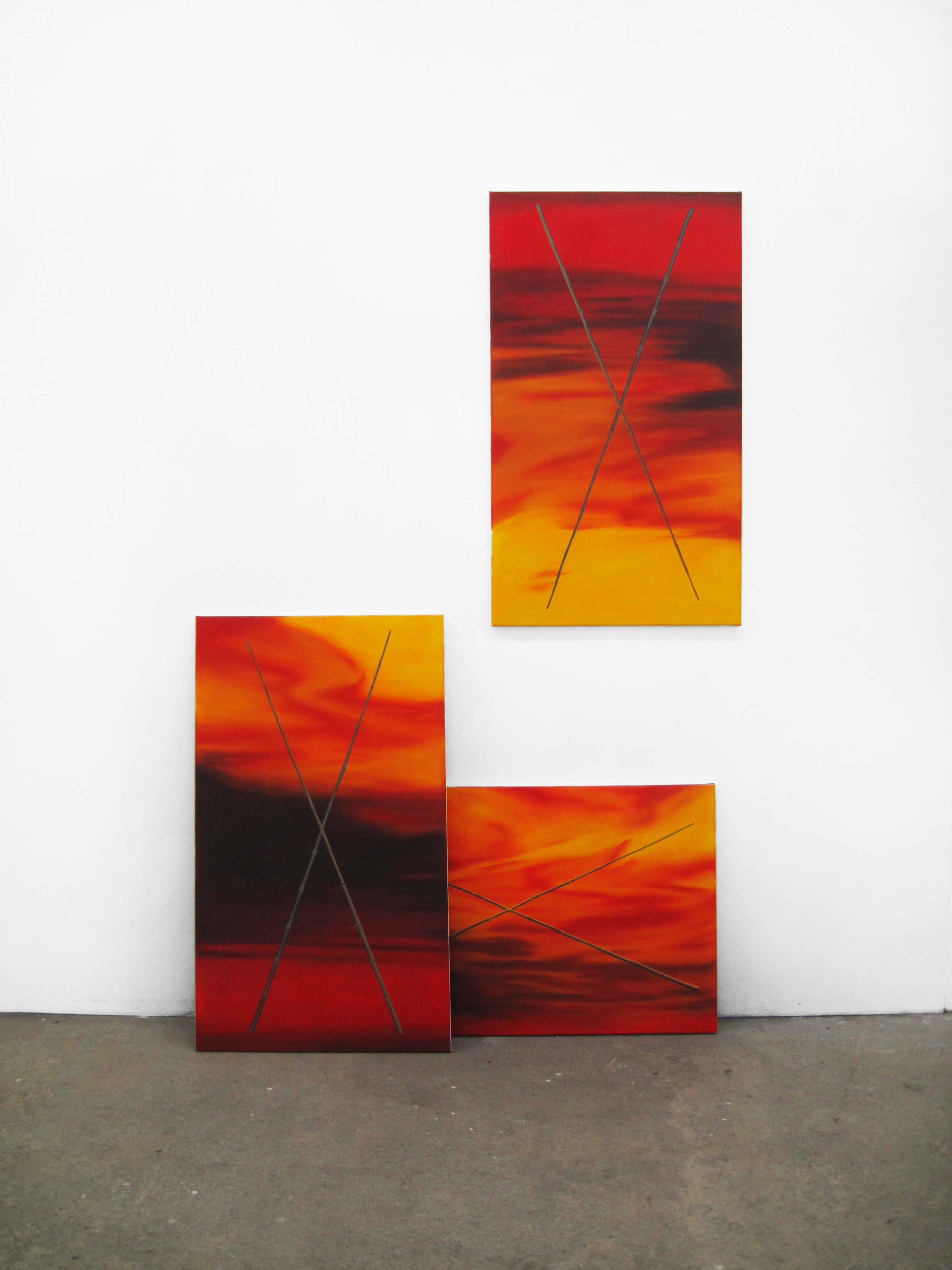
ddddPet Women
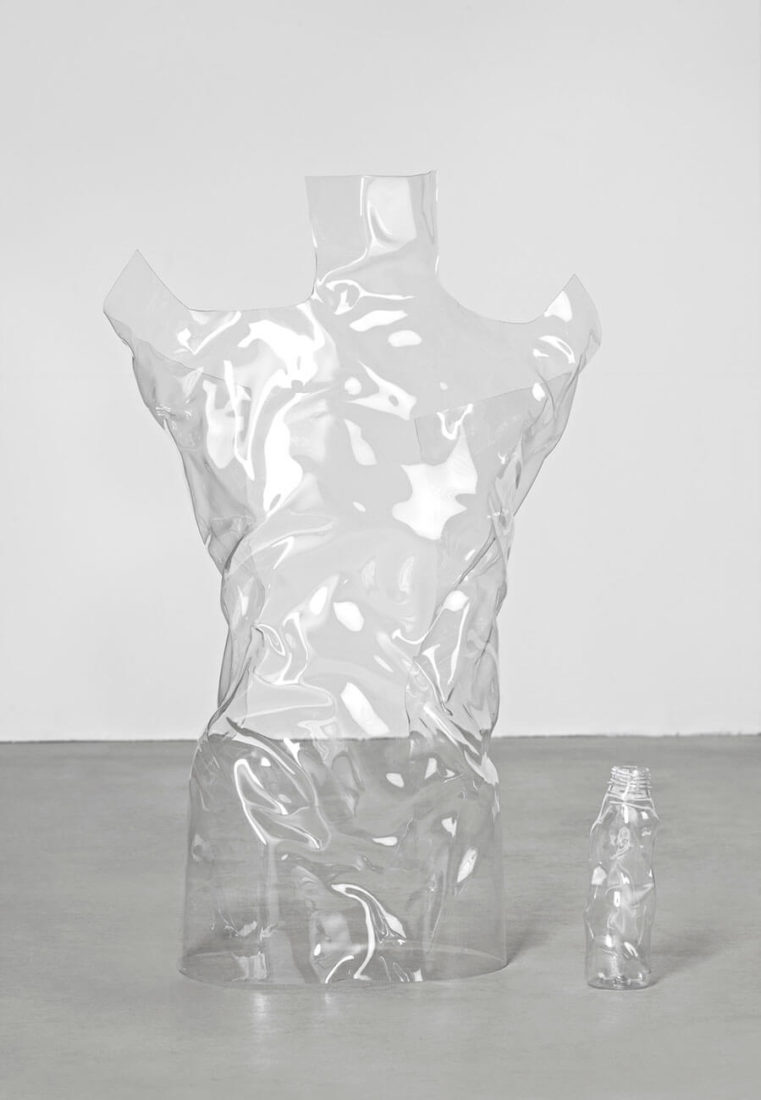
Photography by Hans-Georg Gaul

PET plastic sheet ♳ 60 x 48 x 26 cm
Photography by Hans-Georg Gaul

PET plastic sheet ♳ 60 x 48 x 26 cm
Photography by Hans-Georg Gaul
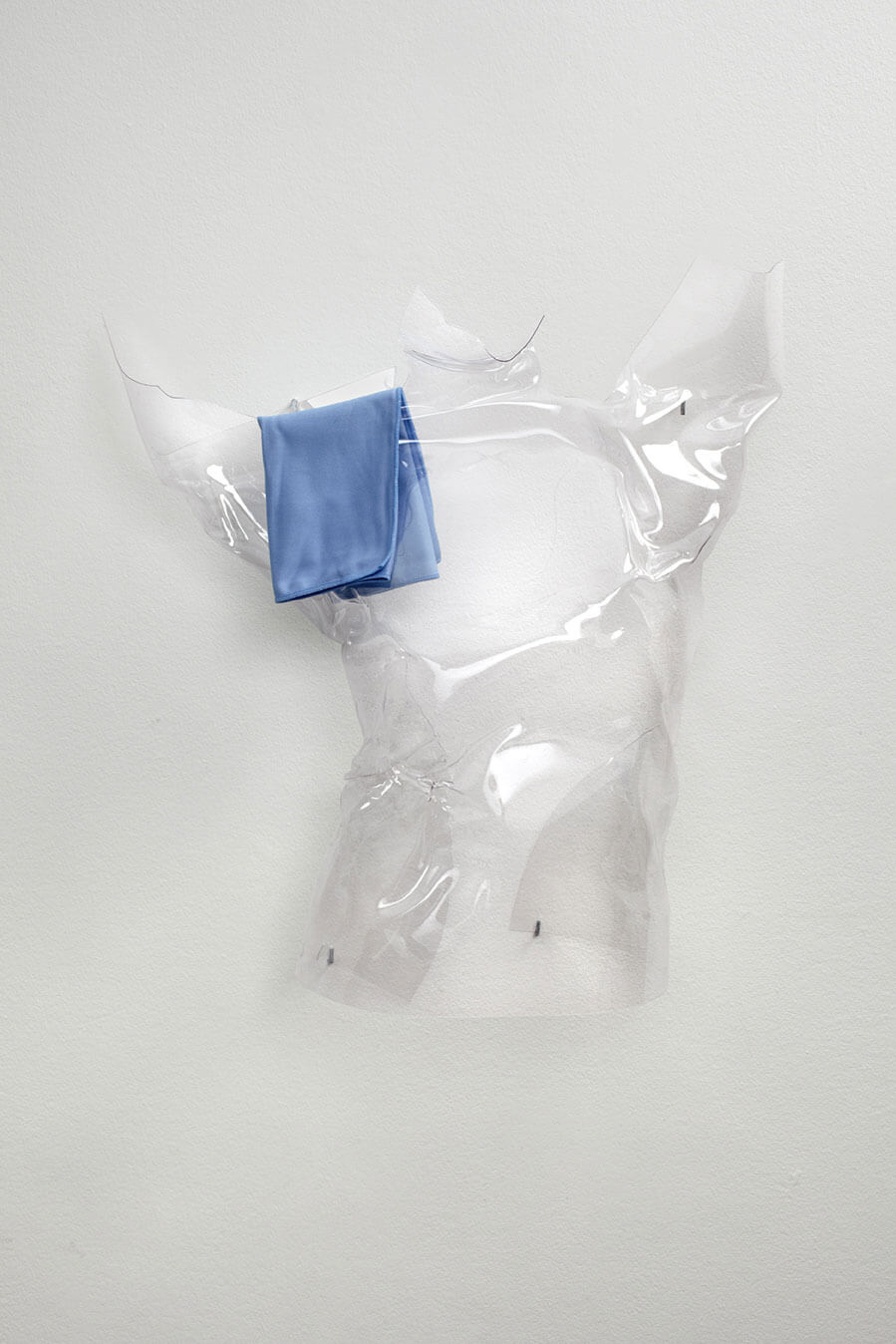
ddddXenoestrogens
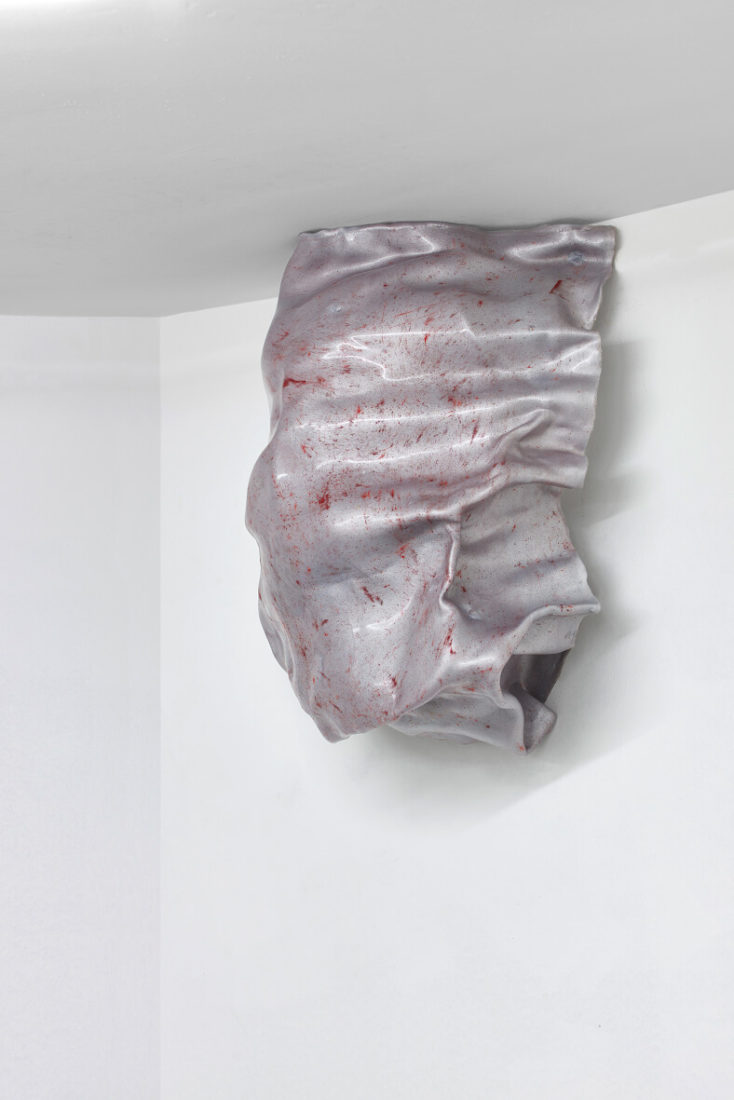
Installation view in Inflected Objects # 2 Circulation – Otherwise, Unhinged, curated by Melanie Bühler, Future Gallery
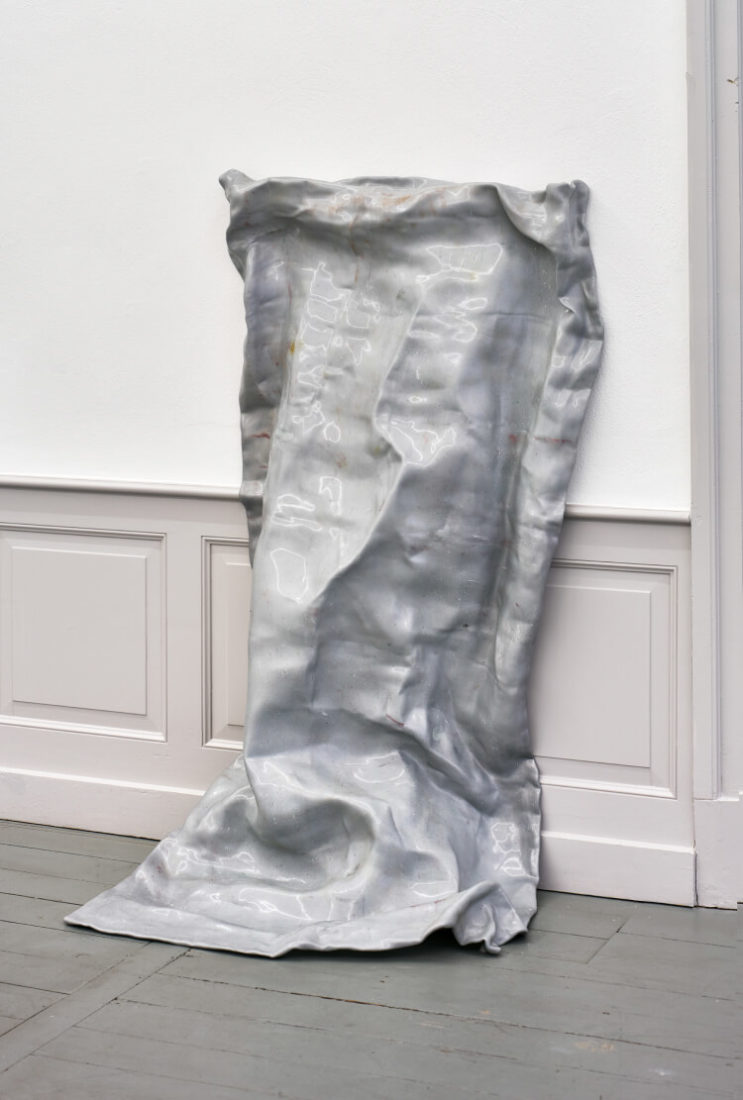
Installation view in Safe to drink, Museum Kurhaus Kleve

Installation view in Crash Test, curated by Nicolas Bourriaud, MO.CO. Montpellier Contemporain.
(Foreground: Phillip Zach Seeing Red II (hugger), 2018)
Xenoestrogens
In her new series Xenoestrogens, Juliette Bonneviot continues her investigations into the nexus between ecology and gender by engaging with the materiality of things through a focused practice. She makes a speculative exploration of the hidden life and power of the chemical compound xenoestrogen (meaning: foreign estrogen), which looks like and mimics estrogen (or oestrogen).
The exhibition consists of paintings Bonneviot made using her collection of different compounds containing types of xenoestrogens. She begins with the core – the chemical xenoestrogen as a material – and spirals outward into many of its biological, cultural and philosophical implications.
In Bonneviot’s thinking, matter is powerful, active and alive. It is dispersive and it moves constantly. Xenoestrogens are a perfectly concentrated example of this movement. Many are deeply disruptive to living systems, having been linked to birth defects, cancerous growth, hormonal disruption, and abnormalities in animal and human reproductive health.
Xenoestrogens can be organic, or synthetic, or mineral. Synthetic xenoestrogens are perhaps the most infamous, found in birth control pills, silicones, oils and lacquers, coolants and insulating fluids, BPA and pesticides, detergents and plasticizers, linens, lotions, shampoos, beverage cans and lacquers. Organic xenoestrogens are found in plant, animal and human life, often performing valuable biological functions, like curbing population growth.
Bonneviot’s process is studied; she gathers, catalogs, archives and arranges her compounds meticulously. In the process of collecting, Bonneviot drew on philosopher Jane Bennett’s description of hoarding as an intentional kind of work, emerging from one’s own attuned orientation to thing-life.
For these paintings, Bonneviot used a variety of xenoestrogens, including: metalloestrogens, which predate oestrogens (and are sourced from aluminum, lead, copper, chrome, antimony, cadmium); phytoestrogens from plants, (extracted from soy and sesame seeds and flax plants); mycoestrogens (pulled from zearalenone, a fungi in grains); and other artificial xenoestrogens (siphoned from silicone, phthalates, BPA, epoxy resins, additives, aspirin and of course, the pill).
The paintings’ minimalism belies their procedural complexity. They involved experimentation with both traditional and unorthodox materials to find the right range of colors, and the right pairings of surfaces with binders. Her mixtures reveal vivid, saturated pigment groups: reds, yellows, blues, earth-colors and greys. (Red, for example, is sourced from silicone rubber, copper, the cadmium pigments in architectural paints and E127 Erythrosine B, a food coloring).
Testing their resistance and flexibility as mediums, she created a linen fabric support with wood floor lacquers to bind, a support of epoxy resins to bind atop PVC, and, in a final iteration, silicone as both binder and surface.
Natural and industrial production intersect on the canvas; the synthetic is mixed in with mineral and organic. Easy binaries and divisions are muddied, as a result. In this flow from ancient organic compounds into the modern and artificial, the viewer is forced to consider a wide arc of time – from the pre-mammalian era, to the future, in which our offspring will be shaped by chemical actants loose in the world now.
In sourcing these xenohormones from a range of organic and synthetic sources, Bonneviot gestures strongly at the “interstitial field of non-personal, ahuman forces, flows, tendencies and trajectories” that define life, as Bennett writes in her seminal text, Vibrant Matter. The materiality and artistry of xenohormones as they both impress and express is one aspect of Bennett’s “agency of assemblages,” or the “working whole made up, variously, of somatic, technological, cultural, and atmospheric elements.”
We’re asked to consider the world from the perspective of the chemical itself – where it was birthed, where it journeyed, and in what form it entered the bloodstream, the water and the technological environment. We are also asked to think on environmental contamination, as volatile xenoestrogens lurk, resilient, in treatment plant runoff and pesticides and waste, eroding hormonal and ecological balance.
Chemicals are always present before us as actants, though not always detectable to the naked eye. They transform our human and animal bodies into spaces of great drama. We’re just a few of many assemblages being wrought and remade in a newly synthetic world.
Nora N. Khan
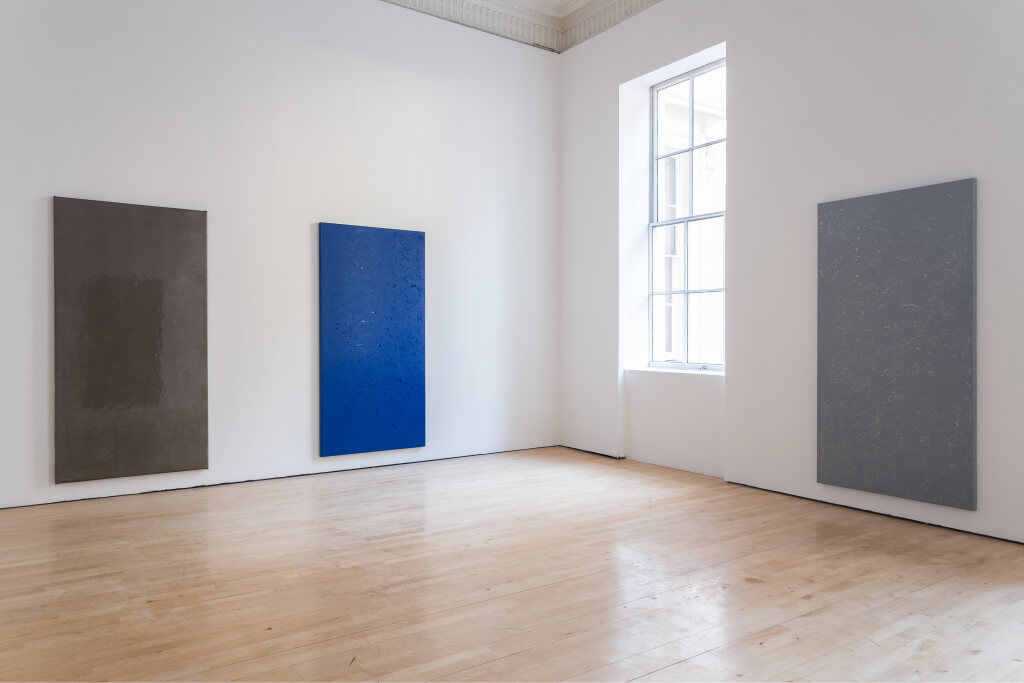
Photography Mark Blower


Photography Hans-Georg Gaul.

Photography by Hans-Georg Gaul
ddddCV
Born 1983 in Paris, lives and works in Paris
juliette dot bonneviot (at) gmail dot com
2002-2008 MFA – Ecole Nationale Supérieure des Beaux-Arts de Paris (DNSAP)
↓ Press review
Solo and two persons exhibitions
2015
Xenoestrogens, Autocenter, Berlin
2014
Minimal Jeune Fille, Wilkinson Gallery, London
2012
Last Spring/Summer, Juliette Bonneviot and Aude Pariset, Les Urbaines, Lausanne
Shanghai Gesture 2, Wilkinson Gallery, London
Pumping Dancers, CEO, Malmö
2011
Pink Pink Stink Nice Drink, Circus, Berlin
Shanghai Gesture, Mark & Kyoko, Berlin
2010
Succubus, Juliette Bonneviot & Aude Pariset, PMgalerie, Berlin
Selected group exhibitions
2022
Elephant’s leg, Tonus, Paris
2020
Your friends and neighbors, High Art, Paris
2018
Crash Test, curated by Nicolas Bourriaud, MO.CO. Montpellier Contemporain, Montpellier
Polymeric lust, Display, Berlin
Body echo, NıCOLETTı, Paris
2017
Le Rêve des Formes, Palais de Tokyo, Paris
Safe to drink, Museum Kurhaus Kleve, Kleve
(Dys)-tropism, Super Dakota, Brussels
2016
Inflected Objects # 2 Circulation – Otherwise, Unhinged, Future Gallery, Berlin
Abstract Sex, CCS, Bard College, Annandale-On-Hudson
Me, Inc., Rotwand – Sabina Kohler & Bettina Meier-Bickel, Zurich
The Green Ray, curated by Andrew Hunt, Wilkinson Gallery, London
When The Cat’s Away, Abstraction, Anna Jill Lupertz Gallery, Berlin
Sophia’s Potluck, hotel-art.us, Berlin
Young Girl Reading Group Show, curated by Julia Moritz & YGRG, ArtGenève, Geneva
2015
Co-Workers, Musée d’Art Moderne, Paris
Looks, ICA, London
Percussive Hunter, Akbank Sanat, Istanbul
„Whatever man built could be taken apart”: Image / Order, NAK, Wiesbaden
Mankind/machinekind, Krinzinger Projekte, Vienna
The Vacancy, Galerie Crone, Berlin
New Needs, curated by Rosa Rendl and Isabella Ritter, Pavilion curated by HHDM, Haus Wittman, Etsdorf am Kamp, Austria
X is Y, Sandy Brown, Berlin
Les Oracles, curated by Marisa Olson, XPO Gallery, Paris
IMMUNITY (chorus), Vault, Berlin
Curatron #4, Platform Stockholm, Stockholm
2014
nature after nature, Kunsthalle Fridericianum, Kassel
Art Post-Internet, curated by Karen Archey and Robin Peckham, UCCA, Beijing
Uplifting of Destruction, curated by Eloïse Bonneviot and Anne de Boer, Jupiter Woods, London
Plastic Age, Faszination und Schrecken eines Materials in Kunst und Wissenschaft, Eres Foundation, Munich
Call Me On Sunday, Krinzinger Projekte, Vienna
High Lure Image Content, co-curated by Julie Grosche and Sara Knox Hunter, ΚΘΦ, Richmond
BASIC ZONE, curated by Alessandro Bava, Casamadre Arte Contemporeana, Naples
Nostalgia, Glasgow International, Glasgow
Fight, Center, Berlin
Forza Minibar, Minibar Art Space, Stockholm
They Live, Shanaynay, Paris
2013
Entre-temps…, Brusquement, Et ensuite, 12e Biennale de Lyon, Lyon
Where Narrative Stops, Wilkinson gallery, London
False Optimism, Crawford Art Gallery, Cork
Analogital, Utah Museum of Contemporary Art, Salt Lake City
Light Box 10, Project Number, London
Surface Tension, Galerie Andreas Huber, Vienna
Sallie Gardner: A Group Exhibition, Michael Thibault Gallery, Los Angeles
The Mediterranean Dog, curated by Elise Lammer, Cole, London
Yellowing of the Lunar Consciousness, Massimodeluca, Venice
How Many Eyeballs Tame Complexity, curated by Ben Vickers, BiennaleOnline
4., CEO, Malmö
After School Special, performance, Bergen Kunsthall, Bergen
Gordian Conviviality, curated by Max Schreier, Import Projects, Berlin
2012
The Dark Cube, Palais de Tokyo, Paris
Very abstract and really figurative, Galerie Emanuel Layr, Vienna
entrance 1, entrance 2, Temple Bar Gallery, Dublin
Can’t Touch This, curated by Karen Archey, Art Micro Patronage
2012, curated by Lindsay Jarvis, The Mews Project Space, London
July, CEO, Malmö
Business Innovations for Ubiquitous Authorship, curated by Artie Vierkant, Higher Pictures, New York
Entourage Vip Backstage, curated by Ilja Karilampi, Arbeitsgemeinschaft Züricher Bildhauer, Zurich
Bcc #7, Stadium, New York
Twothousandtwelve, CEO, Malmö
2011
Rhododendron (ii), Space, London
Based In Berlin, Monbijou Park, Berlin
Where Language Stops, Wilkinson Gallery, London
Rhododendron, W139, Amsterdam
Metrospective 1.0, Future Gallery and PROGRAM, Berlin
Amerika, América, Amérique! , presented by Mark&Kyoko, Cleopatra’s Berlin, Berlin
Venus in a shell, Fluxia, Milan
A Painting Show, Autocenter, curated by Aaron Moulton, Berlin
Land Art For A New Generation, Showroom Mama, (show and residency), Rotterdam
Travelin’ light, curated by Felisa Funes, Grimmuseum
2010
Sculpture Storage, La MaMa Gallery and Cooper Union School of Art, New-York
The Bar, Kunsthalle Athena, Athens
Dust Snow, Winter Sculpture Parc, Poznan
Almeria to Béziers to Newquay, Darsa Comfort, Zurich
BYOB, curated by Anne de Vries & Rafaël Rozendaal , Bureau Friederich projectstudio, Berlin
Distorted Viewport, curated by Spiros Hadjidjanos, Forgotten Bar, Berlin
Exhibition IV, curated by 10/2/10, Berlin
Rapidshare curated by Isaac Bigsby Trogdon, Atelierhof Kreuzberg, Berlin
Domestica II, curated by Antoni Hervas Cortes, Barcelona
Enchanted, School of Development, Berlin
Exhibition I, curated by 10/2/10 (Alex Freedman, Annice Kessler, Kathryn Politis and Claudia Rech),Kim bar, Berlin
Sculpture Storage, La MaMa Gallery curated by The Cave and The Cooper Union School of Art, New York
2009
Women Get Fucked, Alogon Gallery, Chicago Project Room, Chicago
Sally’s, Atelierhof Kreuzberg, Berlin
Das 2. Dragoner Regiment im Jahr 2009, Atelierhof Kreuzberg, Berlin
Domestica, curated by Antoni Hervas Cortes, Barcelona
2008
XYZ, Atelierhof, Berlin
Publications, catalogues
2018
Speculations on Anonymous Materials, Nature after Nature, Inhuman, Koenig Books, ISBN : 9783863357320
Crash Test – The Molecular Turn, Les Presses Du Réel, ISBN : 978-2-490123-01-8
2016
Intersubjectivity Vol. 1 Language and Misunderstanding, Abraham Adams, Lou Cantor (Eds.), Sternberg Press, ISBN 978-3-95679-199-4
Aesthetic Politics in Fashion, Elke Gaugele (Ed.), Sternberg Press, ISBN 978-3-95679-079-9
2015
Percussive Hunter, exhibition catalogue, Akbank Sanat International Curator Competition 2014, Akbank Sanat
XenoEstrogens (the Disappearing Male), portfolio, BOMB Magazine
Les Oracles, Marisa Olson and Claire Evans, XPO gallery, ISBN 978 2 9541349 0 1
2014
Art Post-Internet: INFORMATION/DATA by Karen Archey
Plastic Age, Eres Foundation, Munich, ISBN 978-3-00-046784-4
2013
Entre-temps…, Brusquement, Et ensuite, 12e Biennale de Lyon, ISBN : 978-2-84066-648-6
57 CELL issue #2
West Space Journal #1, West Space
2012
Wandering No.1, Wandering Magazine, ISSN: 2235-4417
Linear Manual frontcover, TLTRPreß
2011
PWR PAPER #6, PWR PAPER
Larry’s Se7en, Larry’s
2010
Dust Snow, Morava Books, ISBN: 978-83-926924-2-3
2009
Sally’s, Floating Head Publication
Selected bibliography
2018
Ingrid Luquet Gad. “Crash Test” à La Panacée : art contemporain et anthropocène, Les Inrockuptibles #1160
La jeune scène française du prix Ricard, Numéro art #3
2016
Melanie Bühler. Upcycling Zonder Ophouden, Metroplis M, Issue #4, August September
Christa Benzer. New Materialism, Springerin, Issue #1/16
2015
Chloe Stead. Plastic Surgery, Frieze d/e, Issue #21
Benoît Lamy de La Chapelle. Redefining life Post Human, twenty years later, 02
Elena Gilbert. Domestic Unrest, Sleek, Issue #44, Winter
2014
Eleanor Nairne. Juliette Bonneviot, Frieze Magazine Issue #162, April
Alessandro Bava. Basic Zone, Novembre Magazine, Issue #9, Spring/Summer
Jean Kay. A retrospective reading of Linear Manuel, aqnb
2013
Elvia Wilk. Gordian Conviviality, Frieze d/e Issue #10, June August
Pablo Larios. Meet Berlin-based artist Juliette Bonneviot, Kaleidoscope blog
2012
Coline Milliard. Digital Gets Physical at Dublin’s Temple Bar Gallery, Blouin Artinfo
Amy Knight. Juliette Bonneviot, Symbol, Paper For New Art, Issue #2, Summer
Orit Gat. Artist Profile: Juliette Bonneviot, Rhizome
Natalie Esteve. Follow ‘Les Urbaines’, Kaleidoscope blog
2011
Karen Archey. Nett ist die kleiner Schwester von Scheiße, Rhizome
Jens Hinrichsen. Warum immer woanders?, Monopol
Awards
2016
Ars Viva 2016, nominee
Curation
2010
Etat de choses, co-curating with Aude Pariset, Darsa Comfort, Zurich
Enchanted, School of Development, Berlin